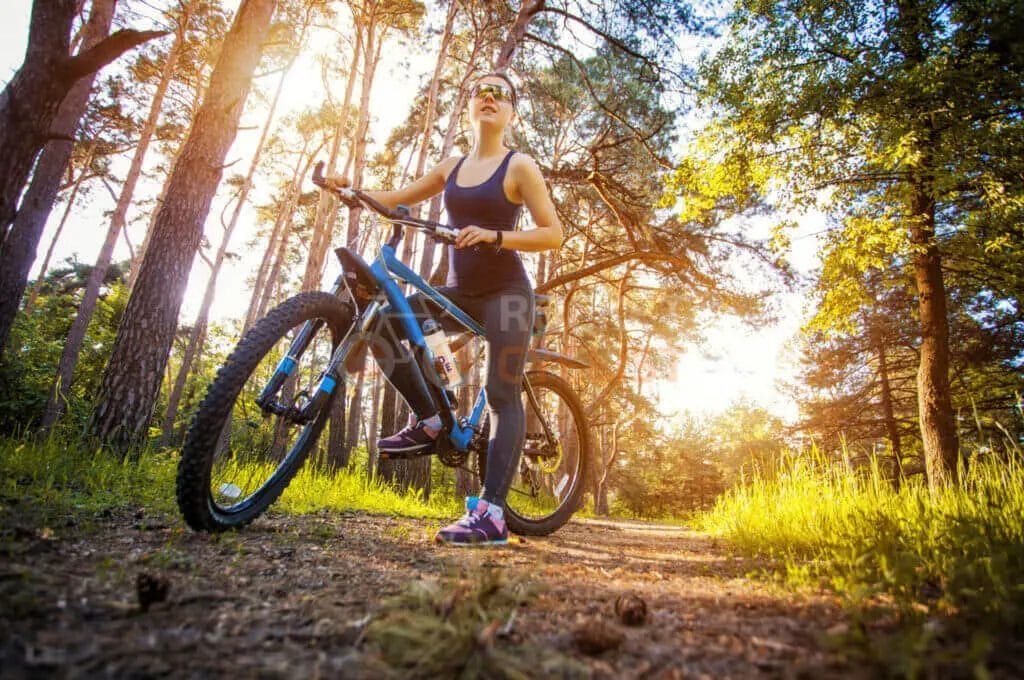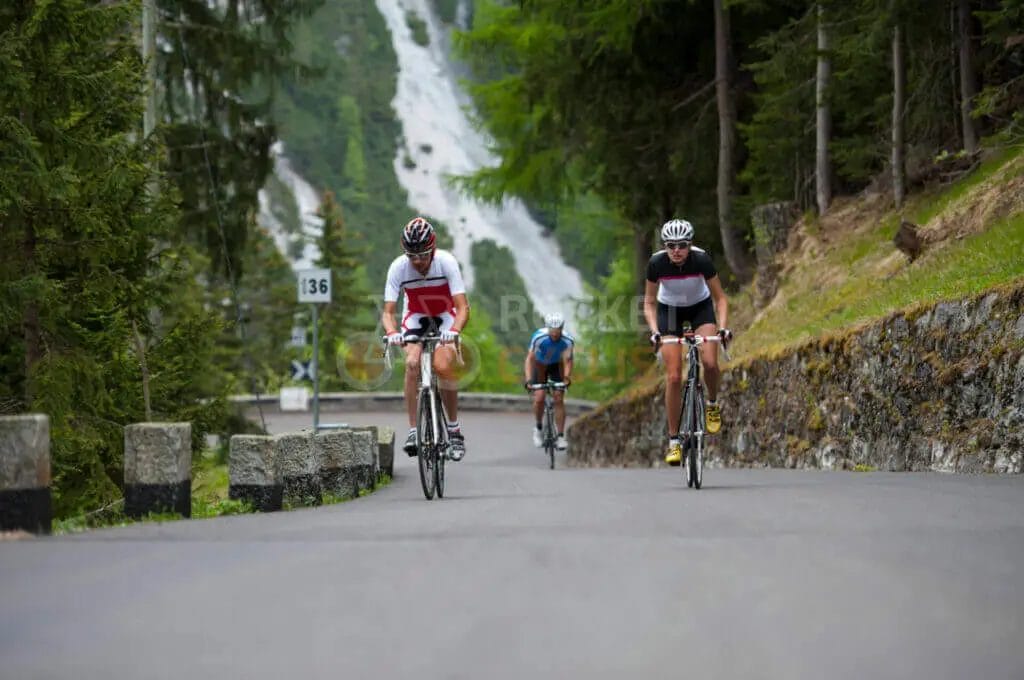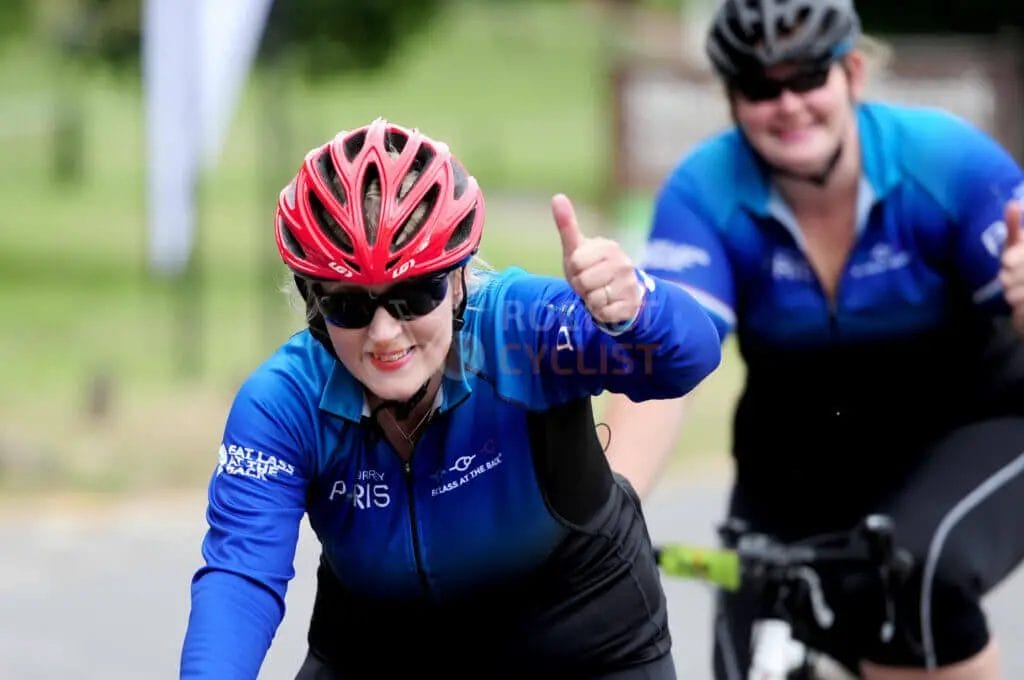Last Updated on April 10, 2024 by Vinson Lozano

Cycling is a great way to stay fit, enjoy the outdoors, and challenge yourself physically. Setting a goal of cycling 100 km can be a fantastic way to push your limits and achieve a sense of accomplishment. However, attempting such a distance without any training can pose some challenges that need to be addressed.
In this blog, we will explore the factors to consider before attempting a 100 km ride, the body’s physical capacity to handle endurance activities, and the importance of proper preparation and conditioning. We will also discuss effective pacing strategies, tips for managing fatigue, and the importance of post-exercise recovery. So, let’s dive in and find out if you can indeed cycle 100 km without training!
Benefits of cycling and setting a goal
Cycling offers numerous benefits for both physical and mental well-being. It is a low-impact exercise that helps improve cardiovascular fitness, build muscle strength, and enhance overall endurance. Setting a goal, such as cycling 100 km, can provide motivation and a sense of purpose. Achieving this goal can boost self-confidence, improve mood, and provide a sense of accomplishment. It allows you to challenge yourself and push your limits, leading to personal growth and development. Additionally, cycling gives you the opportunity to explore new places, enjoy the outdoors, and connect with nature. So, if you’re ready to take on the challenge, let’s dive into the factors to consider before attempting a 100 km ride.
Factors to consider before attempting a 100 km ride
Before attempting a 100 km ride, there are several factors you should consider. Firstly, assess your current level of fitness and cycling experience. Are you comfortable riding long distances? Do you have the necessary endurance and strength? Secondly, evaluate the route and terrain. Are there any challenging hills or difficult sections? Plan accordingly and train on similar routes. Additionally, take into account the weather conditions on the day of your ride. Extreme heat, cold, or rain can significantly impact your performance. It’s also important to have a well-maintained bike and appropriate gear. Finally, ensure you have proper nutrition and hydration strategies in place to fuel your ride. By considering these factors, you can better prepare yourself for a successful 100 km ride.
Understanding the Body’s Physical Capacity

When it comes to attempting a 100 km ride without training, it’s important to understand your body’s physical capacity. Endurance activities like cycling adapt the body over time to build stamina and improve aerobic fitness. While some individuals may have a natural ability to handle longer distances, most people will require training to gradually increase their endurance. Pushing yourself without proper preparation can lead to fatigue, muscle soreness, and potential injury. By training regularly and gradually increasing your mileage, you can build the necessary strength and endurance to complete a 100 km ride comfortably. Remember, it’s always better to be prepared and allow your body to adapt to the demands of long-distance cycling.
How the body adapts to endurance activities
When it comes to endurance activities like cycling, the body undergoes several adaptations to improve its performance. Regular endurance training stimulates the growth of new blood vessels, which enhances the delivery of oxygen to the muscles. This increased oxygen supply allows the muscles to work more efficiently and delays the onset of fatigue. Additionally, endurance training increases the size and number of mitochondria, which are responsible for producing energy in the cells. This leads to improved energy production and greater stamina. The body also becomes more efficient at using stored fat as fuel, which helps to conserve glycogen stores and prolong endurance. With consistent training, these adaptations allow the body to handle longer distances and improve overall aerobic fitness.
Training vs. natural ability
Training vs. natural ability:
While natural ability can play a role in endurance activities like cycling, it is important to recognize that consistent training is key to successfully completing a 100 km ride. Natural ability alone may allow some individuals to tackle long distances without much training, but for the majority, proper conditioning is crucial. Training prepares your body by gradually increasing endurance, strength, and stamina. It also helps you become familiar with pacing and develops mental resilience. Even if you have some natural talent, training will allow you to optimize your performance and minimize the risk of injury. So, while natural ability can be an advantage, it is the combination of both natural ability and training that will ultimately lead to success in cycling long distances.
Preparing for the Ride

To ensure a successful 100 km ride, proper preparation is key. Here are some important factors to consider before embarking on your journey:
- Nutrition and hydration: Fuel your body with a balanced diet rich in carbohydrates, proteins, and healthy fats. Stay hydrated before, during, and after the ride to maintain optimal performance.
- Gear and equipment: Invest in a good quality bike that suits your riding style and fits you well. Wear appropriate cycling attire, including a helmet, gloves, padded shorts, and comfortable shoes.
- Route planning: Familiarize yourself with the route and plan rest stops accordingly. Ensure you have a map or GPS device to navigate.
- Safety precautions: Follow traffic rules, wear reflective gear, and carry essential safety items such as lights, a first aid kit, and a repair kit.
By adequately preparing for the ride, you’ll maximize your chances of completing the 100 km with confidence and enjoyment.
Importance of proper nutrition and hydration
Proper nutrition and hydration play a crucial role in your ability to complete a 100 km ride successfully. Fueling your body with the right nutrients and staying hydrated throughout the ride can enhance endurance, boost performance, and prevent fatigue. Here are some key points to remember:
- Carbohydrates: Fuel up with complex carbohydrates such as whole grains, fruits, and vegetables to provide sustained energy during the ride.
- Proteins: Include lean proteins like chicken, fish, or beans to aid muscle recovery and repair.
- Hydration: Drink plenty of water before, during, and after the ride to prevent dehydration and optimize performance.
- Electrolytes: Replace electrolytes lost through sweat by consuming sports drinks or electrolyte supplements.
- Snacks: Carry easily digestible snacks like energy bars or bananas to provide quick energy boosts during rest stops.
By prioritizing proper nutrition and hydration, you’ll give your body the fuel it needs to endure the 100 km ride and enjoy the experience to its fullest.
Recommended gear and equipment
When preparing for a 100 km ride, it is essential to have the right gear and equipment to ensure a comfortable and safe journey. Here are some recommendations:
- Bicycle: Choose a well-maintained bicycle that suits your riding style and body type. Ensure it is the correct size and has appropriate gearing for the terrain.
- Helmet: Never underestimate the importance of a properly fitted helmet to protect your head in case of an accident. Choose a helmet that meets safety standards.
- Cycling clothing: Wear moisture-wicking and breathable clothing to keep you cool and comfortable during the ride. Padded cycling shorts can also provide extra comfort.
- Shoes and pedals: Invest in cycling shoes and compatible pedals to optimize your pedaling efficiency and power transfer.
- Accessories: Consider carrying a bike pump, spare inner tube, tire levers, and a multi-tool for any necessary repairs on the go.
Remember, having the right gear and equipment can enhance your performance and make your 100 km ride more enjoyable.
Training and Conditioning

To prepare yourself for a 100 km ride, training and conditioning are crucial. Regular cycling is key to building endurance and improving your overall fitness level. Start by gradually increasing your ride distances and durations each week. Incorporate interval training and hill repeats to challenge yourself and improve your speed and strength. It’s also important to cross-train with other activities like strength training and yoga to improve your overall fitness and prevent overuse injuries. Make sure to listen to your body and give yourself enough rest and recovery time between workouts. By consistently training and conditioning your body, you’ll be better prepared to tackle the 100 km ride with confidence and ease.
Building endurance through regular cycling
Regular cycling is the key to building endurance and preparing yourself for a 100 km ride. By consistently riding, you gradually increase your fitness level and stamina, enabling you to endure longer distances. Start by setting a schedule and gradually increasing your ride distance and duration each week. This allows your body to adapt and build endurance over time. Incorporate different terrains and routes to challenge yourself and improve your cycling skills. Additionally, consider including interval training and hill repeats in your rides to push your limits and improve your speed and strength. Remember to listen to your body and give yourself enough rest and recovery time between rides to avoid overtraining.
Incorporating intervals and hill training
Incorporating intervals and hill training into your cycling routine can greatly enhance your endurance and stamina for a 100 km ride. Intervals involve alternating between bursts of high-intensity effort and periods of active recovery. This helps improve your cardiovascular fitness and builds your ability to sustain a faster pace for longer periods. Hill training, on the other hand, challenges your legs and helps strengthen your muscles for climbing. It also improves your power and speed on flat terrain. To incorporate intervals and hill training, you can find hilly routes or use a stationary bike with adjustable resistance. Gradually increase the intensity and duration of these workouts to progressively challenge yourself. Remember to warm up and cool down properly to prevent injuries.
Executing the 100 km Ride

Executing the 100 km Ride:
To successfully complete a 100 km ride, it’s crucial to have an effective pacing strategy. Start at a comfortable pace to conserve energy for the long haul. Break the ride into smaller segments and set goals for each segment, such as reaching a certain distance before taking a short break. Managing your hydration and nutrition throughout the ride is essential. Stay well-hydrated and fuel your body with easily digestible foods to maintain energy levels. Listen to your body and take short rest breaks when needed, but avoid long breaks that can disrupt your momentum. Stay mentally focused and positive, keeping in mind the progress you’ve made and the satisfaction you’ll feel when you cross that finish line.
Effective pacing strategies for long-distance cycling
To successfully complete a 100 km ride, it is crucial to have an effective pacing strategy. Start at a comfortable pace to conserve energy for the long haul. Break the ride into smaller segments and set goals for each segment, such as reaching a certain distance before taking a short break. It is important to maintain a steady pace and not push too hard in the beginning, as this can lead to burnout later on. Managing your hydration and nutrition throughout the ride is also essential. Stay well-hydrated and fuel your body with easily digestible foods to maintain energy levels. Listen to your body and take short rest breaks when needed, but avoid long breaks that can disrupt your momentum. Stay mentally focused and positive, keeping in mind the progress you have made and the satisfaction you will feel when you cross that finish line.
Tips for managing fatigue and discomfort
To manage fatigue and discomfort during a 100 km ride, it’s important to listen to your body and make necessary adjustments. Here are some tips to help you along the way:
- Pace yourself: Start at a comfortable pace and avoid pushing too hard in the beginning. This will help conserve your energy for the long ride.
- Take regular breaks: Plan short rest breaks every 20-30 km. Use this time to stretch, hydrate, and refuel.
- Adjust your position: Shift your body position frequently to alleviate any discomfort. Stand up on the pedals periodically to give your seated muscles a break.
- Stay hydrated and fuel properly: Drink water regularly and consume easily digestible foods to maintain energy levels. Avoid heavy meals during the ride.
- Mentally focus: Stay positive and keep reminding yourself of your progress. Celebrate small milestones to keep motivated.
Remember, managing fatigue and discomfort is part of the challenge, but with these tips, you can make your 100 km ride more enjoyable and successful.
Post-Ride Recovery and Reflection

After completing your 100 km ride, it’s important to focus on post-ride recovery to aid in muscle repair and prevent any lingering soreness. Here are some tips for post-ride recovery:
- Stretch: Take the time to stretch your muscles, especially those that were worked the most during the ride, such as your quadriceps, hamstrings, and calves.
- Rehydrate and refuel: Replace lost fluids and replenish your energy stores with a balanced meal or snack that includes carbohydrates, protein, and healthy fats.
- Rest and sleep: Allow your body to rest and recover by getting a good night’s sleep. This is when the majority of recovery and muscle growth occurs.
- Reflect on your accomplishment: Take a moment to appreciate the hard work and dedication it took to complete the 100 km ride. Reflect on your journey and set new goals for the future.
Remember, post-ride recovery is just as important as the ride itself. Taking the time to recover properly will ensure that you can continue to enjoy cycling and tackle even greater challenges in the future.
Importance of post-exercise recovery
After completing your 100 km ride, it’s crucial to prioritize post-exercise recovery. This phase is essential for your muscles to repair and for your body to regain its strength. Taking the time to recover properly will help prevent any lingering soreness and reduce the risk of injury. It’s important to allow your body to rest and rejuvenate, so make sure to get enough sleep and rest during this time. Additionally, refueling your body with a balanced meal or snack that includes carbohydrates, protein, and healthy fats will replenish your energy stores. Don’t forget to stretch your muscles and engage in light activities, such as walking or gentle stretching, to promote blood flow and aid in healing. Prioritizing post-exercise recovery will ensure that you can continue to enjoy cycling and keep pushing your limits in the future.
Reflecting on the accomplishment and setting new goals
Once you complete your 100 km ride, take a moment to reflect on your accomplishment. You have just achieved a significant milestone and should be proud of your hard work and dedication. Consider how far you have come from the beginning of your training journey and the progress you have made. Allow yourself to celebrate your achievement and the physical and mental strength you have demonstrated.
After reflection, it’s time to set new goals. Use your 100 km ride as a stepping stone for future achievements. This could be increasing the distance to 150 km, improving your speed, or tackling more challenging terrains. Setting new goals will keep you motivated and inspired to continue pushing your limits. Remember to create a realistic plan, establish a training routine, and track your progress along the way. With dedication and perseverance, you can reach new heights in your cycling journey.


